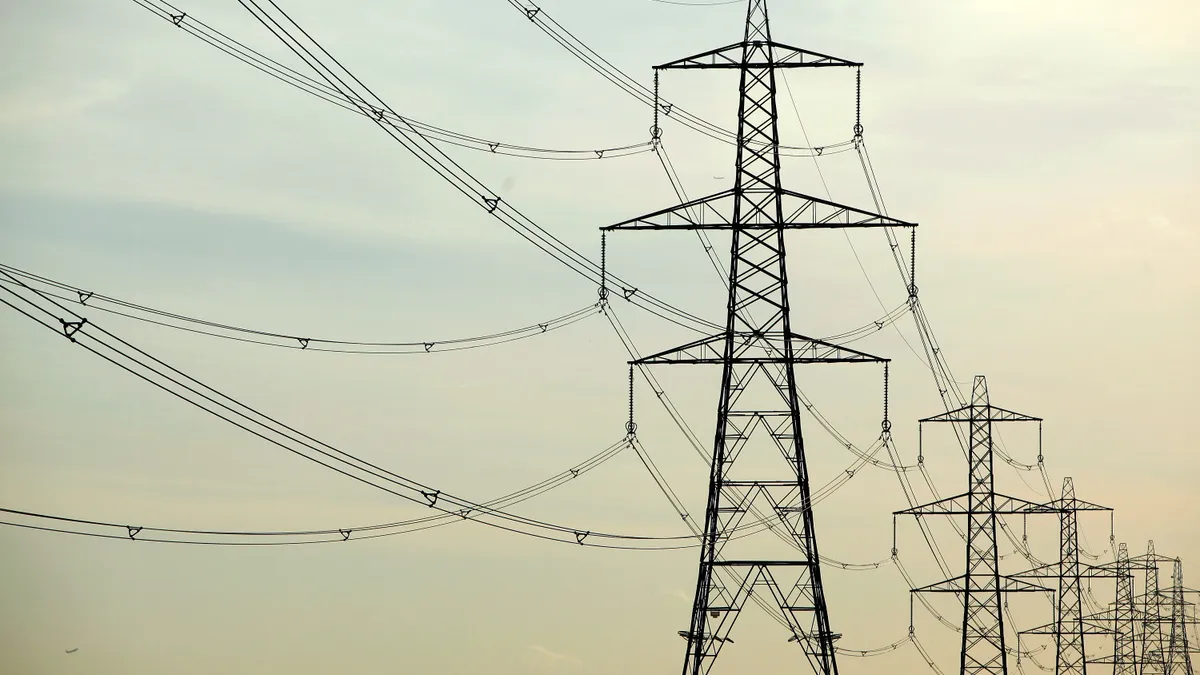Dive Brief:
- The Department of Energy's Pacific Northwest National Lab (PNNL) announced on Monday the availability of a semi-exclusive license for vanadium redox flow (VRF) battery technology as part of the lab's research into innovative long-duration energy storage.
- Redox flow batteries are an alternative to lithium-ion batteries that offer more energy capacity and discharge, allowing for long-duration storage that can boost the resilience of a grid powered by renewable energy. VRF batteries use vanadium ions as charge carriers and require fewer electroactive elements than other flow battery types.
- PNNL has partnered with two companies on VRF technology and the latest license opportunity marks the last one for a technology the lab says can offer an improvement over existing lithium-ion and flow batteries for energy storage.
Dive Insight:
Amid the broader grid transition to renewable energy, long-duration storage is emerging as a priority for its ability to weather the day-to-day and seasonal variation in production. While lower-cost lithium-ion batteries can offer storage typically for up to as much as eight hours, experts agree that technology that stores energy for longer will be crucial to maintaining reliability.
The Department of Energy announced last year a moonshot goal to reduce the cost of long-duration storage by 90% within a decade in an effort to deploy more utility-scale storage to support the growth of renewables. The technology-agnostic goal includes backing research projects like those at PNNL.
VRF batteries were engineered at the University of New South Wales in the 1980s as an improvement on flow battery technology. A PNNL study says the batteries can repeatedly convert and store multiple MWhs of electrical energy, offering high energy efficiency and long lifetime. The typically large batteries are especially well equipped for utility-scale storage.
Historically, PNNL said, redox flow batteries have struggled to function in a wide range of temperatures and have been too costly. The DOE lab has worked on new approaches, including a new electrolyte that offers higher energy density and a broader operating temperature range. Researchers have also worked on an iron-vanadium redox flow battery with similar benefits.
Allan Tuan, commercialization manager for energy, grid and advanced fuel research at PNNL, said in a statement that the technology "has great commercial and energy security potential."
A study released by the Department of Defense in 2020 found that a VRF-enabled microgrid could provide "satisfactory reliability performance" comparable to a diesel generator and held advantages over lithium-ion batteries in terms of safety. However, the higher costs of the technology "early on in its development and deployment lifecycle" would limit its potential, the report found. A second phase of the study is being conducted by clean tech integrator Ameresco to study physical validation of flow batteries.
Nestor Sepulveda, a McKinsey & Co. energy transition associate, said that while flow batteries are promising technology because they can decouple power capacity from energy capacity to make storage more cost-effective, the costs of VRF may hold it back. As a post-doctoral researcher at the Massachusetts Institute of Technology, Sepulveda co-authored a study last year that found that long-duration storage would need to drop from roughly $200/kWh today to $10/kWh to fully displace nuclear power and even lower to fully displace natural gas.
"When you start thinking about anything longer than eight hours, what starts to dominate is the cost structure of the energy component," Sepulveda said. "From that regard, VRF has some limitations based on how cheap you can get because of the materials. We can see how much the technology is pushed for the material to start to drop in cost."













